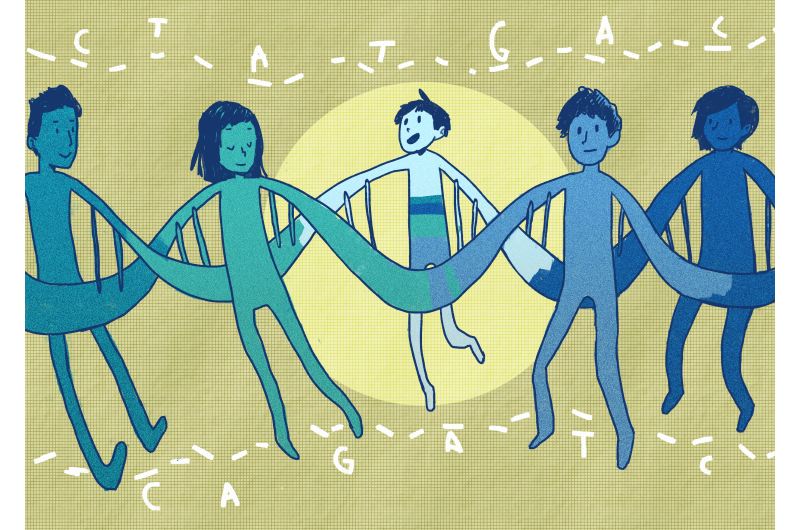Is it your second cousin? Cotton swabs may tell you

The precision of DNA testing portrayed on mystery television shows could soon become reality. With a new technique developed at Kyoto University, a simple swab sample can accurately confirm relatedness between two individuals as distant as second cousins. With more DNA datasets at hand, the method could be utilized to identify disaster victims in mass floods and tornadoes that destroy entire communities.
"Up till now, the accuracy of verifying pairwise blood relations between parents and children were 95 percent and siblings around 72 percent. With slightly more distant relatives like aunts and uncles it goes down to five percent. As for cousins and second cousins, it was practically impossible," says study author Keiji Tamaki. "This new technique brings all of this to nearly 100 percent."
All it takes is a dab inside the cheek with a cotton swab. From these samples they compare 170 thousand single nucleotide polymorphisms (SNP), which are locations where the genetic code varies minutely from person to person. Instead of simply comparing how each individual SNP matches, they also examine how many consecutive matches there are.
"Our inspiration for the project came from tsunami victims in the 2011 Great East Japan earthquake," says Chie Morimoto, who led the study. "Many tsunami victims passed away, and over 70 of them have yet to be identified even though five years have passed."
DNA collected from personal belongings left at home—for example, toothbrushes the person used to use—are reliable material for personal identification. Tsunamis, however, wipe away entire communities, leaving forensic scientists with no direct clues. In such instances, testing for blood relations is the only beacon of hope; but thisalso had its limitations, because it can only confirm blood relationships between first-degree relatives like children or siblings.
For the time being the team only has enough information for the Japanese population, but with sufficientdata the method could be applied anywhere in the world.
"The DNA from the Great East Japan tsunami victims have been subjected to a prolonged period of time, so we won't be able to apply this method immediately to these people," says Morimoto. "At the moment we're making improvements so that we can utilize DNA from degraded samples like these."
More information: Chie Morimoto et al, Pairwise Kinship Analysis by the Index of Chromosome Sharing Using High-Density Single Nucleotide Polymorphisms, PLOS ONE (2016). DOI: 10.1371/journal.pone.0160287

















